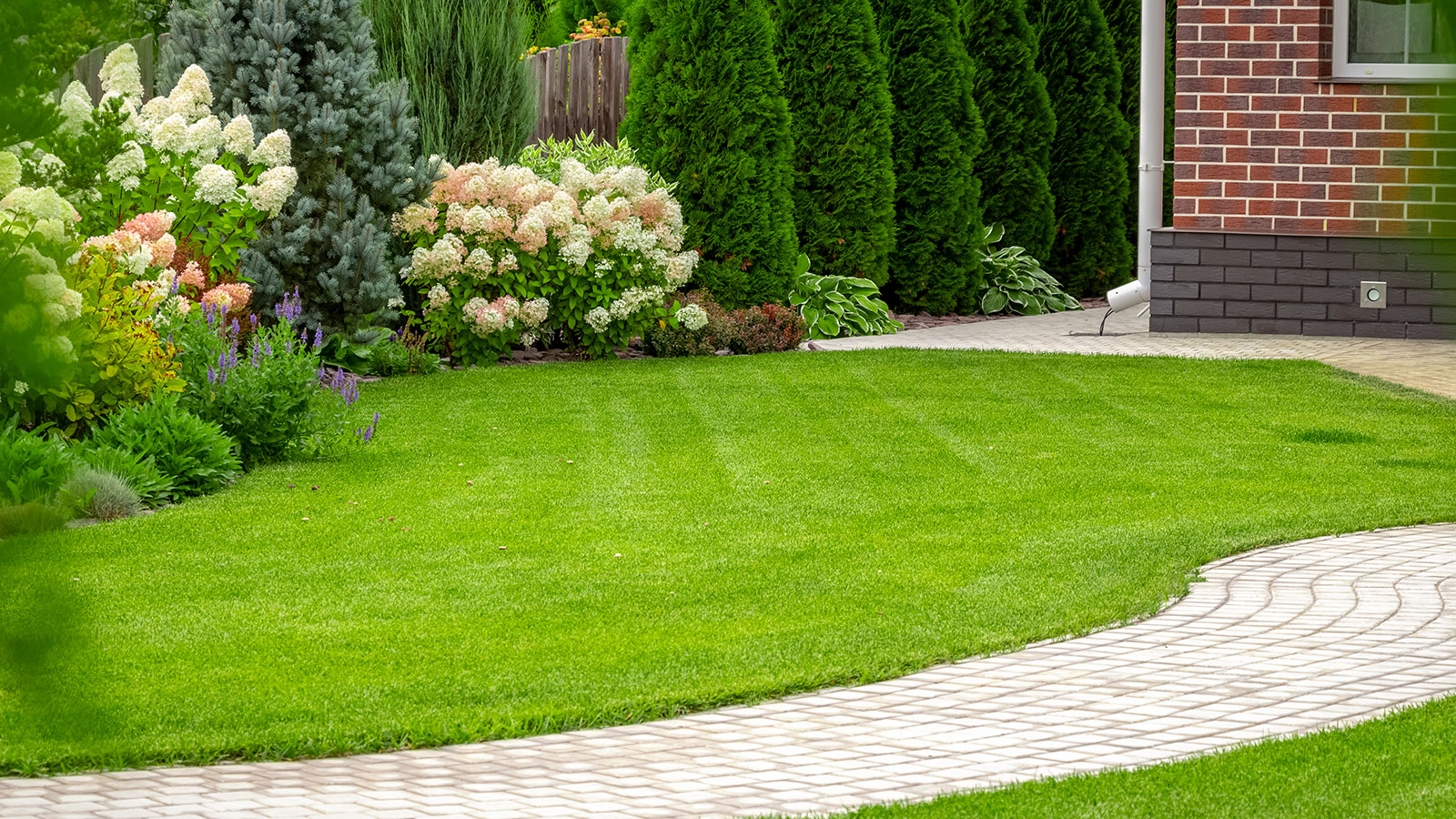Which grass seed is best for overseeding? Experts reveal their top choices
Our advice will help you choose the right one for your lawn and your climate


Discovering which grass seed is best for overseeding is a real game changer. No more patchy lawns or lackluster turf, instead you can simply enjoy lush green grass year-round. Yes, it does take a bit of work to achieve that dense and dreamy sward, but armed with some expert tips and know-how it is entirely possible.
There are many go-to grass species that professionals turn to when faced with a tired, balding lawn, but their choices do depend on some key factors. Turf grasses are divided into two main categories – warm-season and cool-season species – and their use depends largely on the local climate. Checking out your USDA Plant Hardiness Zone will help identify which types of grass will thrive in your yard.
Often the best seed choice for overseeding is simply to stick to one that was originally used. Not only is it known to grow in the location but repairs will blend seamlessly. There are, however, other options out there, whether you're looking for fast-growing grass seeds or ones that will cope with heavy use. Our experts share their hard-earned knowledge and tips to help you get the lawn you long for.

5 grass seed varieties for overseeding
‘Some grass varieties are better suited for overseeding than others, as they can establish quickly and blend well with the existing lawn,’ says Shawn Denny, earthwork contractor and owner at Specialty Grading.
Whether you want to bulk up your lawn, repair patches in the grass or green up a warm-season lawn during its dormant period, the following turf seed types are well worth a try for overseeding.
Tried and tested by experts these grasses are renowned for their speedy germination, fast growing action and durability, so if planting grass seed is on your to-do list this season, it's worth considering one of these options.
1. Fine Fescue
‘This type of grass can be overseeded in the fall or spring, and it's well suited for overseeding because of its fine texture and shade tolerance,’ says Shawn Denny.
Design expertise in your inbox – from inspiring decorating ideas and beautiful celebrity homes to practical gardening advice and shopping round-ups.
Like many of the cool-season grasses, this is a bunch type grass that produces hundreds of tillers or new blades from a single central crown. This continual growth habit is ideal for filling out gaps in fading lawns, so is worth considering if you want to make your lawn green and thick once more.
2. Kentucky Bluegrass
Kentucky Bluegrass is highly regarded for its fine texture and rich green color. ‘The best type of grass for overseeding should be the original grass type, but you can’t go wrong with Kentucky bluegrass,’ says Aaron Green, Landscaping Expert of Essential Home & Garden.
Best suited to areas with mild winters this species provides excellent texture and color year-round. It’s worth knowing that this grass is slow to germinate, taking up to a month to show any signs of growth.
3. Perennial Ryegrass
This is another popular cool-season choice for overseeding. ‘If you're looking for a full-sun grass that's great for overseeding, look no further than perennial ryegrass. It's a fast-growing, wear-resistant grass that can handle heavy traffic and is highly resistant to disease. Varieties like 'Pennington Platinum' and 'Aerial' are great choices for overseeding,’ says Zeeshan Haider, founder of greenryenthusiast.com.
This grass is also a firm favorite for overseeding warm-season lawns, which tend to fade to brown during their dormant period.
Rick Gibson, Extension Agent from University of Arizona explains, ‘In the summer, Bermuda grass hybrids grow well and are generally hardy, but they go dormant during the winter months. On the other hand, winter grasses, like annual and perennial ryegrass, cannot take the heat and dry of our summers. To solve this problem, many turf managers choose to overseed the hardy Bermuda with winter grasses to keep lawns green and looking good through the winter. Then, in the spring, the winter grasses are scalped back so that the Bermuda can begin to grow uninhibited.’
Hardy in USDA zones 3-7 perennial ryegrass can green up in as little as four days, but usually takes around seven to 10 days.

If your lawn sees a lot of use, with kids playing on it for example, make sure you choose a durable grass seed that can take heavy use
4. Rough bluegrass (Poa trivialis)
‘This is great for overseeding dormant warm-season lawns for winter color,’ says Eric DeBoer, M.S., agronomist, Simple Lawn Solutions.
Ideal for overseeding Bermuda grass it’s also handy for creating shady lawns in the fog belt areas. This vigorous grass does prefer wet areas and will not tolerate heavy use, heat or drought conditions.
5. Annual ryegrass
As its name suggests, this is a single season grass. ‘This cool-season grass is known for its quick establishment and ability to blend well with existing lawns,’ says Shawn Denny.
It’s also a very useful option when it comes to greening up established lawns in the temperate south. ‘All warm season grasses except centipede may be overseeded in the fall, with annual or perennial ryegrass to provide green color throughout the winter with no harm to your permanent warm season turf,’ says Michael Deaton, Turf Agronomist at Pennington Seed.
Should I mix grass seed with topsoil when overseeding?
‘Having topsoil spread over the seeds after it has been planted may seem like a good idea, but let us tell you why it is not,’ says Asi Elias, owner of Atlanta Landscaping Matters.
‘While the thought may cross your mind that it would protect the seed and help it germinate, unfortunately grass seeds when sprouting are not easily able to push through the heavy earth material like topsoil. When placing topsoil over newly planted seed it will actually suffocate the grass seedlings and ultimately they never have the chance to even get started.’
What is the best seed for overseeding?
Choosing a fast-growing, cool season grass is always a winner for overseeding, as says Sarah at Lawnchick.com.
‘Many people choose to combine several types of seeds, and if you plan to do this in your lawn, I recommend a blend of Kentucky Bluegrass and Tall Fescue, available from Amazon, for overseeding. When combining these two, tall fescue should make up around 90 per cent of the seed due to it not blending extremely well.’
Make sure you're up to speed with when to plant grass seed to ensure you get the timing right for the best results too.
Knowing when to overseed in spring and when to overseed a lawn in fall will give you the most reliable success.

Journalist Jill Morgan has spent over 20 years writing and editing gardening, interior and property features. Titles she has worked on include The English Home, House Beautiful, Ideal Home, Houzz and Modern Gardens and she writes regularly for H&G as a Contributing Editor. Whilst she is a dab hand at renovation projects and DIY, she is happiest when out digging in the garden or planning a new border.